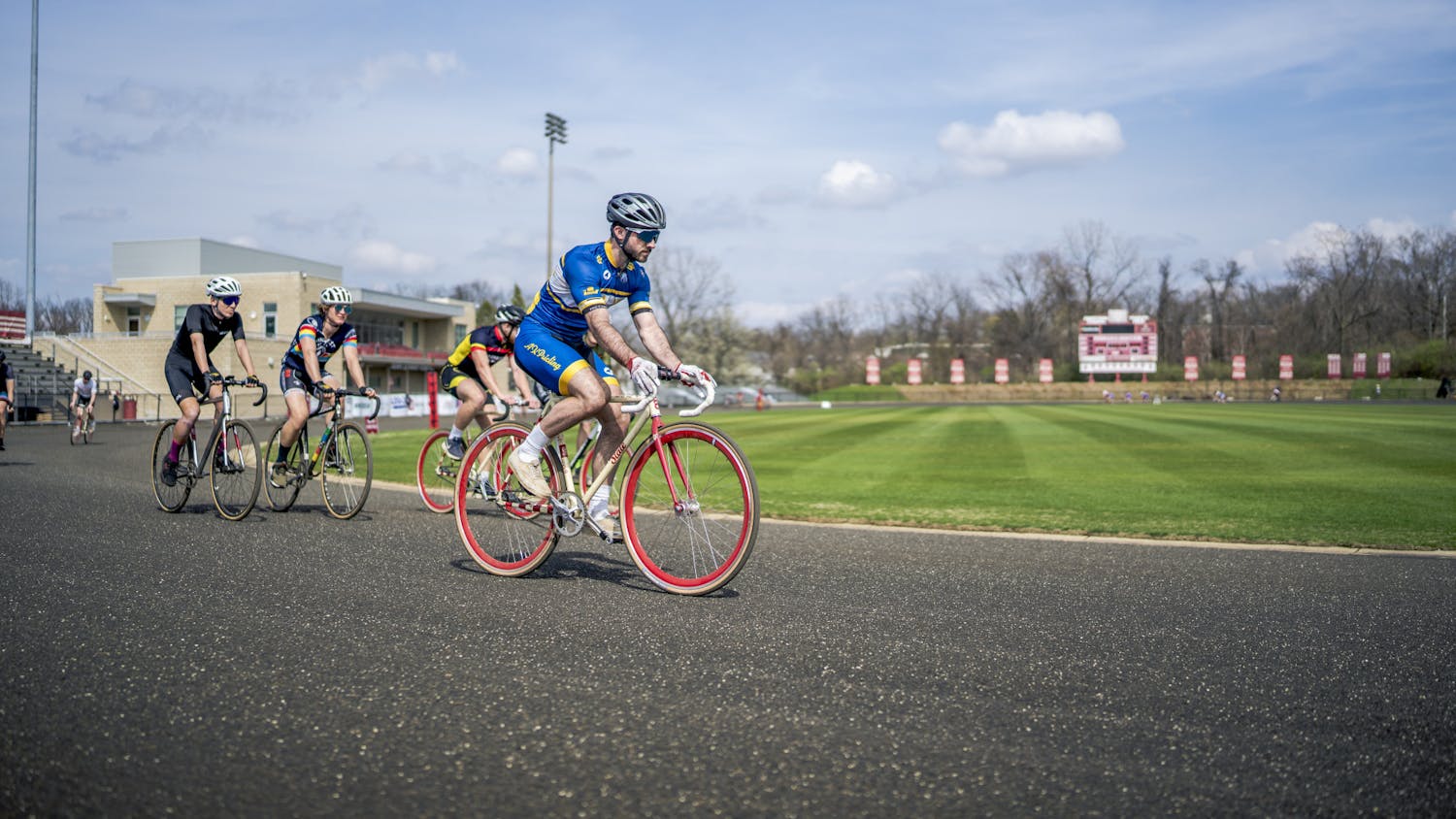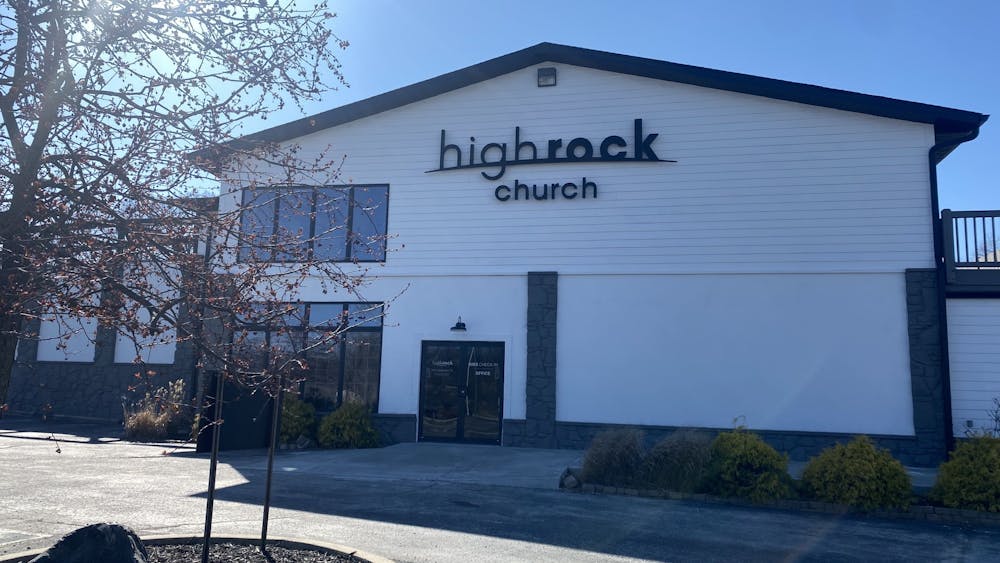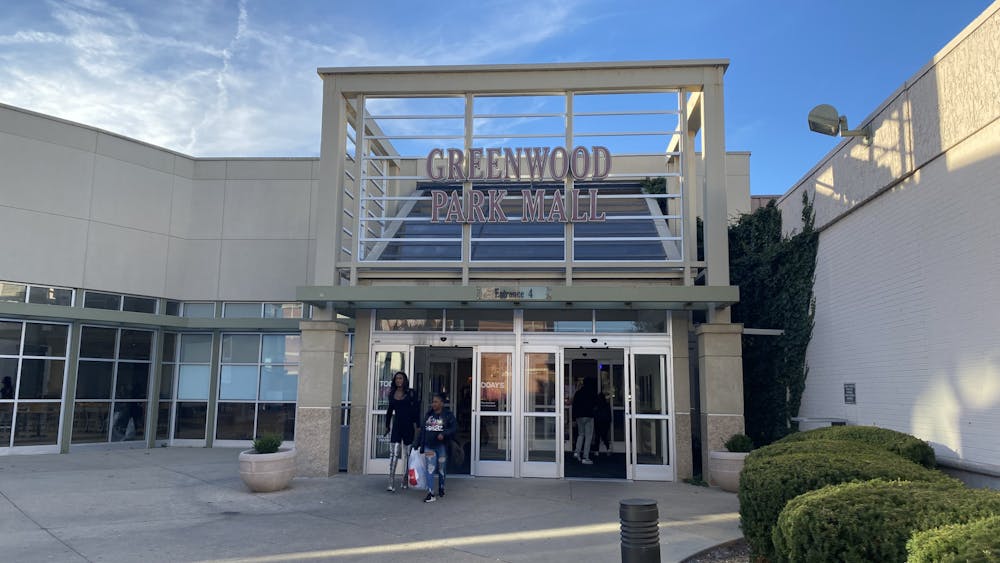AUTHOR’S NOTE: Sexual assault issues are highlighted every April for Sexual Assault Awareness Month. But for the people who experience sexual assault firsthand, the memories last for years.
Here, senior Caroline Shurig and Middle Way House Prevention Programs Coordinator Cierra Thomas-Williams bravely share the personal stories of their own experiences with sexual assault as well as their fight to make a difference.
Find audio of the two women's stories and additional information at www.idsnews.com/sexualassault.
It’s been six years for senior Caroline Shurig, 12 years for Cierra Thomas-Williams, but they still wake to nightmares.
“At first, it was every other day,” Caroline says in November. “The last one was probably three weeks ago. It was the most graphic I’ve had in years.”
It’s been a long time, but not enough for her and Cierra to forget they were sexually assaulted. They’ve dealt with the nightmares, with their memories, but Caroline and Cierra can’t forget that not long ago, their control was taken from them and that they’ve fought to get it back.
“Even though it’s been over 10 years since any of that stuff has happened, I still feel like it was yesterday,” Cierra says. “And so I’m not in a place of healing quite yet, but I’m trying to get there.”
A place of healing doesn’t come easily — something Caroline and Cierra have both learned while volunteering at Middle Way House. At the Bloomington nonprofit, they help other sexual assault survivors — those who have defeated the victim-mentality — through the healing process. Along the way, the two women have become survivors themselves.
A Gift
Tunnel vision hits once Caroline hits the hallway at IU-Health Bloomington Hospital. The beeping, the talking and the noise all drown out.
The adrenaline she felt in the seven minutes from her house to the hospital becomes a sudden calm. Her heart slows. She’s in the zone. She’ll get information from the triage nurse, first. Is it domestic violence? Sexual assault? Rape? She has a minute and a half to learn as much as she can. Then she’s in the room.
As an on-scene advocate for Middle Way House, Caroline sees survivors in the first hours after they’ve been sexually assaulted. She signs up for on-call shifts, sometimes up to six a week, and drives to the hospital at the survivor’s request.
At the hospital, she listens patiently to the survivors or sits in silence. She provides encouragement or keeps a distance. She’s there for support when the survivors need her most because six years ago, she was in their shoes.
Six years ago, Caroline was late to class. She was 16 years old, a sophomore in high school. As she ran up a back staircase, with thoughts of figure skating practice and landing that jump clouding her mind, she didn’t notice the senior standing in front of her.
“The first time it happened, it was more like him shoving me up against the wall and forcefully assaulting me,” she says. “But it was definitely all over the clothes. I pushed him away and walked up the stairs and the day just went on.”
The assaults didn’t stop there. During the next three months, Caroline says, she was assaulted by the same attacker multiple times. He stalked her, appearing at the movies, by her car, in the mall — everywhere. The last time, he attacked her near the woods next to her school’s parking lot. She blacked out.
“There’s a piece of sidewalk that I was walking on one day, and I know exactly where my foot stepped and where I saw him again,” she says. “Then I have no memory between that time and a large, several week period of time.”
Caroline explains that blacking out was a defense mechanism, something her brain did to protect her from remembering the trauma. She understands that now after working at Middle Way House and seeing other survivors relive the experience again and again. She doesn’t want that. She’s glad her brain blocked it.
In a way, it’s Caroline’s choice. She chooses not to try to remember what happened in attempts to put the assaults behind her.
Restoring a survivor’s choice in everyday situations is most important in Caroline’s job, as well as in her own life. She says regaining choice has to start right after the assault when survivors have lost all sense of safety and control.
“Sometimes they’ll obsess on an article of clothing,” Caroline says as an example. “‘Those are my favorite mittens I have right here. I take them everywhere with me. My grandmother knitted them for me. They’re special to me.’”
It’s the survivor’s choice to keep the mittens, and Caroline makes sure that happens, even if it means giving up a piece of evidence. The mittens could contain DNA, or they could give a clue to the attacker’s identity. But Caroline doesn’t care. The survivor is her priority, and it’s the survivor’s choice.
“My job is to say she wants the gloves,” Caroline says. “We’ve got to respect her choice. I don’t care about evidence collection. I just care about her.”
Caroline knows what it’s like to not let go of a piece of clothing. She still keeps the Keds she was wearing the first time she was attacked.
“I still wear them, and I kind of sometimes feel triumphant when I wear them,” she says. “Like, an ‘I’m above you’ kind of thing. That’s just important to me to never get rid of them.”
Caroline still catches herself acting overly controlling the way she tells survivors not to — getting defensive when she hears someone rephrase her story or needing to be close to a doorway at all times — but because of her work, she says she can explain those behaviors and make an active decision not to do them. She knows she craves control as a way of coping.
Caroline controls who she tells her story to and how she tells them. She says if she tells people, she could lose control of what they think of her.
“I would say that when I explain it to them, and I’m always in a very controlled environment, I’m very clear about this doesn’t define me,” she says.
It took years for Caroline to get to that point. At first, it did define her.
Now, understanding her own tendencies has helped Caroline become a survivor, not a victim. She says she can relate more easily to survivors and can understand that their manners after being sexually assaulted aren’t erratic — they’re normal.
“There’s just that gut feeling that, ‘Oh, that would bother me,’” Caroline says. “That’s a gift it’s given me.”
Building Healthy Relationships
Cierra teaches high-school and middle-school students how to define rape and sexual assault. Through her program, Building Healthy Relationships, she teaches them what to do if they’ve experienced it themselves, and she knows some of them already have.
Cierra sees the ways they react to her program. She hears their stories after class. She can’t separate the students’ feelings from her own experiences, even after more than 10 years. She can’t.
Not yet.
As a freshman in high school, Cierra was raped the first time she had sex. Her boyfriend was a senior. It was his 18th birthday. He ignored Cierra’s constant reminder that she wouldn’t have sex with him, and when he began taking off her pants,
she froze.
“People don’t talk about what fear does to you. It freezes a lot of people,” she says. “Rape happens so easily when the body shuts down. It took me becoming an educator about that to feel it inside that it’s not my fault.”
Cierra needed someone like her in high school. She needed an adult to talk to and help her figure out what happened.
After her boyfriend raped her, Cierra’s health teacher taught her class about rape and sexual assault. She told her students to talk to her in person or write a letter if they needed to talk. Cierra took the opportunity.
It wasn’t an easy letter to write, and while it was only one sentence, it took Cierra a long time to put into words.
“My boyfriend had sex with me when I didn’t want to, was I raped?”
The next day, Cierra was invisible. Her teacher ignored her. Her question went
unanswered.
“To me, that said, ‘It’s okay that your boyfriend raped you,’” Cierra says. “I carried that with me for a long time.”
Cierra began volunteering with Building Healthy Relationships in 2008 and became the program’s director in May 2011.
The program consists of interactive lessons that teach students ages 11 to 19 the difference between abuse and equality. Day one starts with gender stereotyping. Day two moves to healthy and unhealthy relationships. Day three discusses rape. It’s the day Cierra says the most students are absent.
“I suppose parents feel like that’s something too heavy for a 10th grader to be learning about,” Cierra says.
Cierra can see the students are already dealing with the issues, even as teenagers. She says they need this curriculum so they can stop the stereotyping, the abuse and the pain before they start.
After showing a video about rape, Cierra says one male student who had not talked once the previous two days spoke up after a survivor’s friend called her attacker a rapist.
“You can’t call him that,” the student said. “That’s like calling someone a burglar for stealing a dollar.”
Cierra waited as the student’s classmates responded. She knew the women in the room would correct him.
“You’re comparing a woman who’s been victimized to a dollar bill?” a female student said. “Her sexuality and choice is worth a dollar?”
“Burglars steal millions and millions of dollars, and that’s what makes them a burglar,” the male student replied. “If you were standing on the edge of a cliff, and you throw yourself off a cliff, would you blame the cliff for falling off?”
The conversation came up again a few periods later, Cierra says, and this time, the class came up with a conclusion: You have to rape more than once to be considered
a rapist.
“So I said no,” Cierra says. “We just defined rape as un-consensual sex. There’s no number on there.”
While Cierra can handle students’ thoughts and reactions in the classroom, speaking with them one-on-one about their experiences can be difficult. She can’t separate her memories from theirs. She hasn’t yet found a balance between her assaults and her work.
“I need to not feel their pain as intensely as I do,” she says. “It immobilizes me.”
Like Caroline, Cierra keeps a piece of clothing from when she was assaulted again in college — when her boyfriend’s friend and three roommates raped her after a night at the bars. It’s a simple sundress, one that used to make her feel good about herself.
After the rape, she transformed the dress into a piece of artwork. She mounted the dress on a piece of paper and printed her story in bold on it. She then placed barbed wire around the dress and hung it in a survivor’s art gallery at her college.
“It ended up being a very dangerous piece of clothing for me,” she says. “It ruined me in many, many ways. I lost my confidence and self-esteem again.”
Cierra still has the dress somewhere in her house. One day, she’ll burn it.
“It makes me really sad, the young woman who I was, and I’m still trying to overcome that guilt and shame,” she says, “so I need to burn it and get rid of it when I’m good and ready.”
That guilt makes Cierra blame herself for the rapes. She knows, morally, that it’s wrong to blame herself and not her attackers.
“I struggle to not do that to myself,” she says. “Those guys knew what they were doing to me.”
Cierra understands her job’s importance. If she weren’t there, who would be? It’s not every day an adult tells students she wants to listen to their problems. It’s not every day the adult understands them. Even if Cierra can’t separate her memories from her work, she knows she’s reaching students through her program.
“It’s so necessary that it’s not something that would ever cause me to quit,” Cierra says. “I guess it keeps me
motivated.”
Getting Through
It’s been a long road for Caroline and Cierra — one they share. When they tell their stories of rape and sexual assault, there are patterns, overlaps and similarities. They’ve both reached a point where they can share their stories, where they want to help people understand.
Caroline won’t be an on-scene advocate much longer. She graduates in May, and that’s when she’ll stop. In the fall, she plans to study adoption law. It’s still advocating but a different topic, she says.
Middle Way House has been a good experience, she says, but her time there
is finished.
“It’s just been a part of getting through everything and the process,” she says. “It’ll hold a role in my life, but I don’t think I ever want to work at a full-time job dealing with it specifically. I admire (advocates’) courage, but I don’t think I have the strength to keep it out of my personal life.”
Cierra will remain at Middle Way House as long as her job, which is grant funded, exists. She loves educating and has endless passion for it, she says.
“I’ve had quite a few jobs, and this job makes me feel like I’m actually doing something,” she says.
It’s been two years for Caroline, four years for Cierra since they joined Middle Way House in fighting back. They can’t forget their own experiences, and they don’t want to.
“It changed my outlook on how I look at things. I’m a more compassionate person,” Caroline says. “People are surprised when I say I wouldn’t take it back. It took a long time for me to say I’m glad it happened. It hasn’t defined me.”
Two women overcome sexual assault experiences through Middle Way House volunteering

Get stories like this in your inbox
Subscribe





